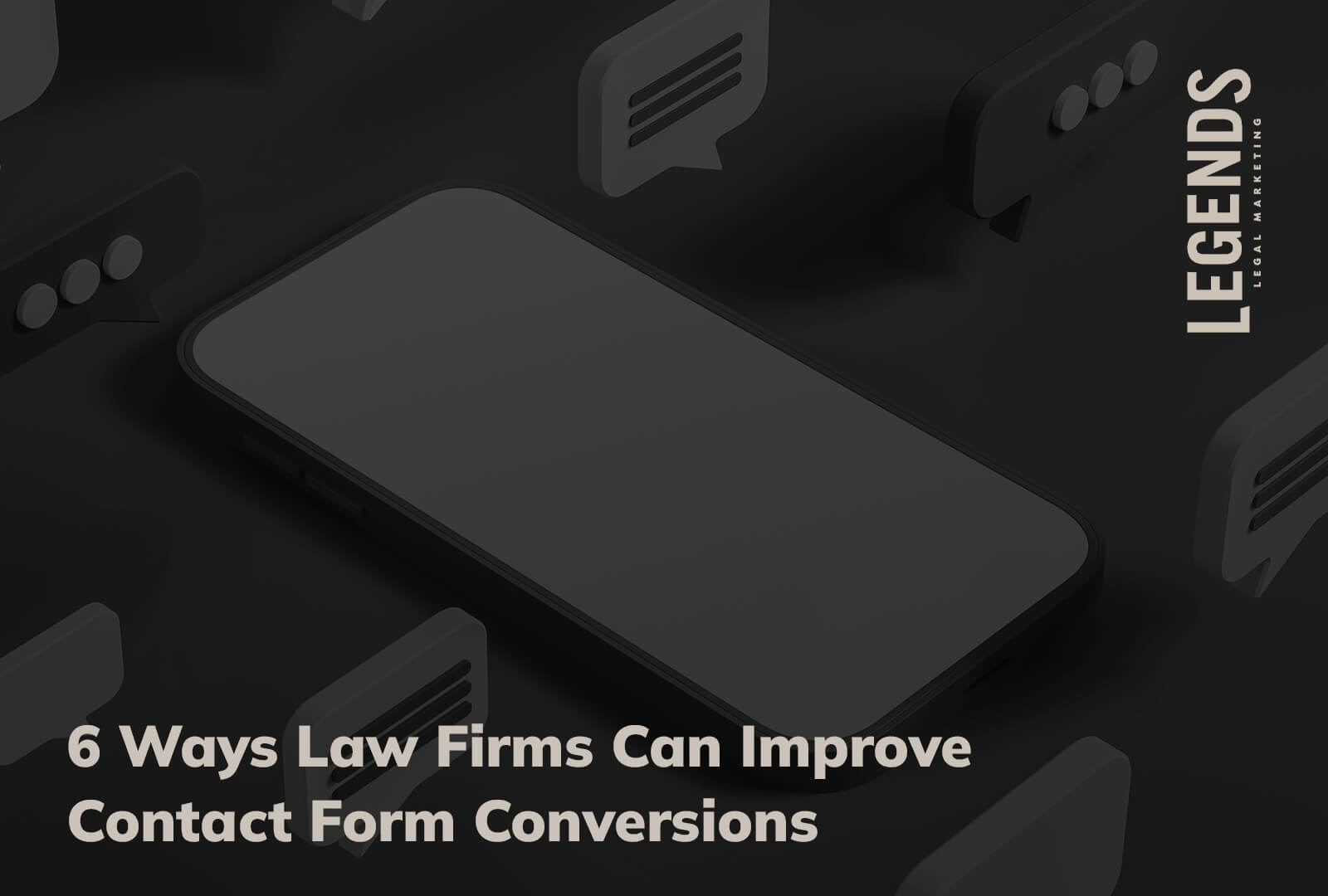In today’s digital age, a well-optimized contact form can be the difference between a potential client and a missed opportunity for law firms. At Legends, we understand the unique challenges faced by legal professionals in converting website visitors into actionable leads. By following a few simple, yet effective strategies, you can make sure every visitor to your site feels encouraged to reach out. In this blog, we delve into six strategic ways to enhance your contact form conversions, ensuring your firm not only attracts visitors but also effectively engages and retains them.
1. Device Compatibility
Whether a potential client is looking at your webpage on a computer, tablet, or smartphone, the experience needs to convert a casual browser into a client no matter the medium. In order to make sure your web page’s impact is consistent, check it out on different devices. For an expert opinion, talk to your web developer to make sure your webpage is ready for any device your potential clients may use to search the web.
2. White Space, White Space, White Space!
Most attorneys’ websites are filled with photos, areas of practice, descriptions of their abilities, client testimonials, wins at trial, blog listings, logos from associations, awards, and everything and anything the attorney believes will attract new clients. In truth, too many elements on the home page (or any page of your website) can cause “friction.” Cluttered web pages, no matter how well-intentioned, overwhelm the potential client, and they are more likely to click out of your web page than contact your law firm. Tidy up your page by transferring essential content to its own page, giving your home page a spacious, clean look.
3. Use Clear and Compelling CTAs Above and Below the Fold
The “above the fold” section is the part of your web page that can be seen without scrolling. Your tagline is above the fold, and it must be informative and relevant and paired with copy that echoes its sentiment. The button your visitors click to submit their contact information should have copy that is either reminiscent of your tagline or somehow related to it. “Schedule Your Free Consultation Today” or “Get Your Questions Answered!” would be far more effective than a simple “Submit” button. We typically recommend that you keep your form and submit button, more commonly known as the “call to action,” above the fold. Though this is typically the industry standard, you should always feel free to test this advice and see what yields better results for your law firm.
4. Give Your Visitors Options
Some visitors may prefer different methods of communication. That’s why it’s important to prominently display your phone number in addition to listing the contact form. It’s also a good idea to include links to your social media somewhere on your site, as well. A new (and often effective!) way to provide instant answers to your visitors’ questions is to implement a live chat integration. This allows visitors to get immediate answers to their questions and can increase their likelihood of getting in further contact with you.
5. Submission and Contact Forms
Many contact forms are simply uninviting to website visitors. The boxes asking for personal information are often small, aesthetically unappealing, and intrusive. So what’s the fix? Start by hiring a team who can make your contact form (and your brand as a whole) look more attractive. Next, consider your submission form copy. While asking the right questions is essential, not asking the wrong questions is vital. As an attorney, the most critical information you need to gather is first name, phone number, and case type. If you ask for more information than the potential client may want to divulge (email addresses, addresses, and extensive details), visitors will often close out of your web page, and you’ve just lost a lead.
Another strategy is to use a two or three-step process. Instead of asking your potential client to fill out a form, provide them with a simple button labeled “Get Help Now” that leads them to a single field asking for their first name (Step 1). Once completed and submitted, prompt them to enter contact information: “How May We Contact You?” (Step 2). Finally, “What can we help you with?” over a small text box (Step 3). This approach could gently lead the potential client through the initial contact sequence and yield higher submission rates.
6. Highlight Trust with Client Testimonials
When creating your web page, it’s pretty easy to forget the importance of speaking in terms that your audience can understand … and sometimes, that’s by letting someone else do the talking for you. Testing shows that client testimonials tend to be enticing throughout your site – but particularly next to your contact buttons. If you have a good collection of solid client testimonials, consider putting them on your site!
Let Legends Help You Transform Your Website!
At the end of the day, when trying to get the “right” clients to contact you, you should focus on eliminating anything that clutters the page, leaving ample “white space,” and concentrating on the elements that drive visitors to want to contact you. The more elements you have, the more information a visitor has to sort through before they make the decision to contact you. Most importantly, the call to action should be right at their fingertips. Once they know they can get the help they need, you are just a click away.
At Legends Legal Marketing, we work with lawyers from diverse practice areas and sizes throughout the United States. If you’re in need of legal website design, social media management for attorneys, and legal SEO, schedule a consultation to find out how to take YOUR practice to the next level.




